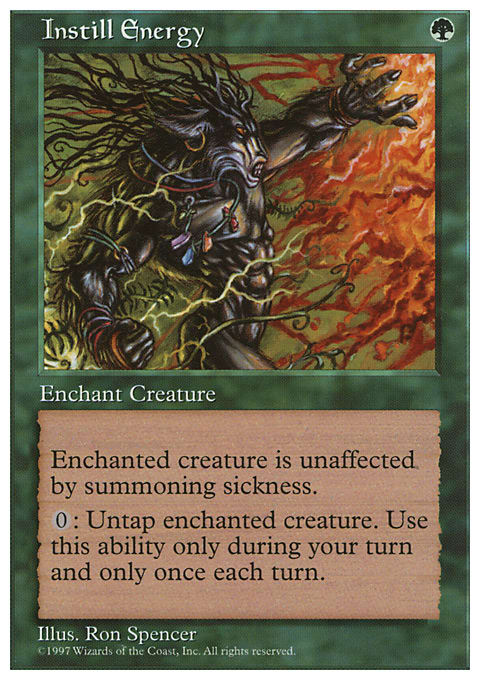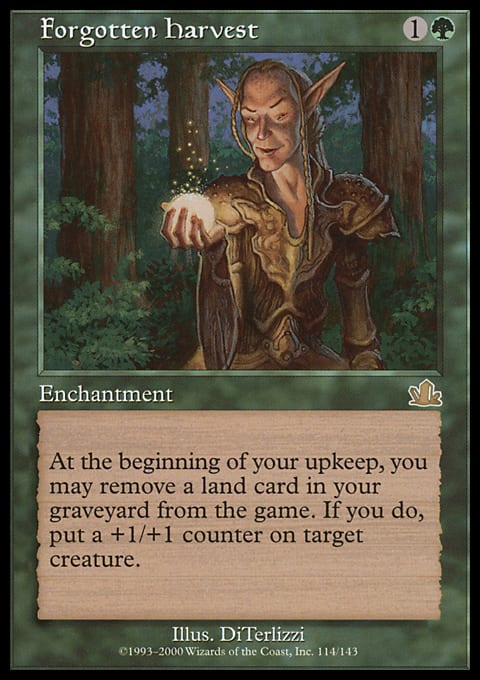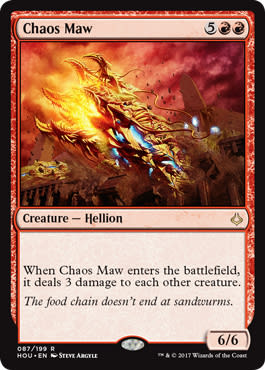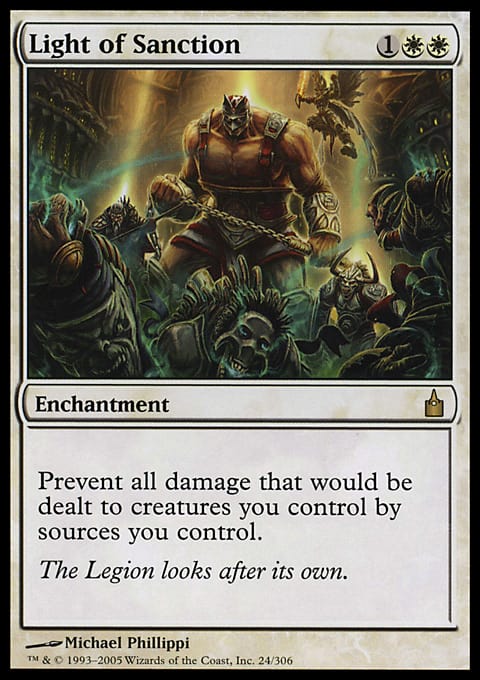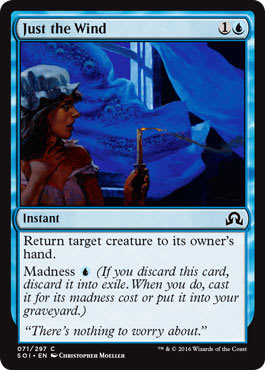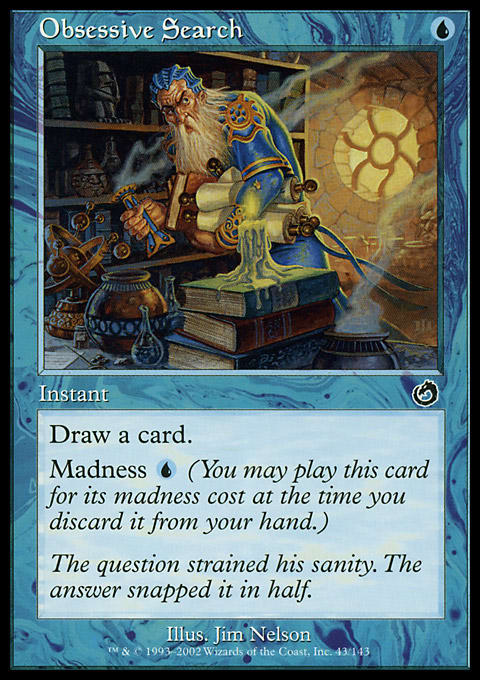When I was a kid, my family used to sit around the kitchen table and read from the good book. No, not Jayemdae Tome or Venser's Journal. That good book. You know the one I’m talking about. Among the many stories I grew up hearing was one about ancient Egypt, ten terrible plagues, and a guy named Moses.
Today, we’re going to gather around the kitchen table again, but this time we’re going to talk about Magic, not Moses. Specifically, we will focus on “kitchen table combos” that employ new cards from Hour of Devastation. As with any new Magic release there has been a lot of good writing about combos with the new cards. However, I’ve found that many of these involve some of the more costly cards in the game. So in this article I’m going to focus on combos that use really inexpensive cards. These are combos to test out on your friends in non-competitive formats.
Act of Heroism + Pride Guardian
Combine this simple combination with something that taps the cat—anything that includes “tap an untapped creature you control” as part of its cost. Selesnya Evangel is a great example: you tap it and Pride Guardian to make a token. Then on the next turn, your opponent thinks you’re open and attacks with two creatures. You surprise her with Act of Heroism and gain six life. If you have a creature like Bloodbond Vampire on the battlefield, then the combo is even better.
God spells + mana rocks and mana dorks
In this block, each of the five good gods of Amonkhet has a rare spell with the rules text, “Lands you control don’t untap during your next untap step.” These spells include: Bontu's Last Reckoning, Hazoret's Undying Fury, Kefnet's Last Word, Oketra's Last Mercy, and Rhonas's Last Stand.
Being unable to untap your lands for a whole turn is a real downside. To get around this, we need to find ways to produce the mana we need without using lands.
“Mana rocks” like Basalt Monolith, Thran Dynamo, Dreamstone Hedron, and a host of artifacts that tap for one mana can be acquired for mere coins. However, if you want to spend the money, you can invest in Mana Vault, Sol Ring, and other more expensive mana rocks. Many of these only produce colorless mana, so you’ll need to pair them with other sources.
That brings us to “mana dorks” like: Opaline Unicorn, Avacyn's Pilgrim, Elves of Deep Shadow, Zhur-Taa Druid and a host of other mana-producing creatures. Servant of the Conduit also allows you to use Energy Counters to produce mana of any color.
When you combine these options you can get some pretty powerful combinations. For example, ![]()
![]() Elf decks are a much-loved trope. With Elvish Mystic, Elves of Deep Shadow, and Elvish Archdruid you can run both Rhonas's Last Stand and Bontu's Last Reckoning without tapping any of your lands.
Elf decks are a much-loved trope. With Elvish Mystic, Elves of Deep Shadow, and Elvish Archdruid you can run both Rhonas's Last Stand and Bontu's Last Reckoning without tapping any of your lands.
Lastly, if you have a plan for untapping your lands with something like Reset or Sword of Feast and Famine, then all the better. But these cards are typically pretty expensive.
Steward of Solidarity + Nature's Blessing, or Instill Energy, or Freed from the Real, or Aura of Dominion
A friend of mine has won a number of casual games with combos like this one. Put one of them on a Selesnya Evangel or Stonybrook Schoolmaster and watch it go. Imagine Steward of Solidarity combined with Aura of Dominion. As long as you have unused mana you can create vigilant tokens. Add this combo to anything with the rules text “whenever a creature enters the battlefield” and you’ve really got a strong combo.
Dunes of the Dead + Raze or Ruinous Minotaur
Decks that specialize in land destruction are a lot of fun as long as you’re the controller. Stone Rain and other similar cards are really inexpensive to acquire. Most of them can be found in the 10 cent bins at your local game store, or for “Buy 1 get 3 free” on Coolstuffinc.com. But each time I’ve built a deck with this strategy I’ve hesitated to use Raze. Giving up one of my own lands just feels too costly.
However, in Hour of Devastation there are a number of cards which reward you for having desert lands in your graveyard — Desert's Hold, Sand Strangler, and Wall of Forgotten Pharaohs, just to name a few.
One fun casual deck might be a Red deck that combined Dunes of the Dead, Raze, Ruinous Minotaur, Gilded Cerodon, Sand Strangler, and Desert of the Fervent. Another fun, kitchen table combo (that also has a lot of flavor) could be combining Dunes of the Dead + Raze + Forgotten Harvest.
Grind // Dust + creatures with undying + sacrifice outlets
I’ve seen lots of combos with undying. Any card that has “sacrifice a creature you control” in its activation cost is more efficient if the creatures has undying. For example, Ashnod's Altar is already an amazing, frequently broken card. Combine it with Young Wolf and you get lots of mana fast. Add in the grind part of Grind // Dust and you’ve got an additional activation by using the grind ability to remove the +1/+1 counter on Young Wolf. (Keep in mind that +1/+1 counters and -1/-1 counters cancel each other out when they are on the same creature.)
Chaos Maw + Circle of Protection: Red or Light of Sanction
Chaos Maw is an expensive beast. With its high converted mana cost it’s likely destined to see the most play in Commander and casual formats. Ye olde Circle of Protection: Red (Yes, a card from Alpha!) as well as Light of Sanction take away its downside.
Bloodwater Entity + ripple spells or miracle spells
This is a typical combination for many ![]()
![]() Izzet decks that manipulate your draws in order to gain advantage. If you’re unfamiliar with this archetypal deck, then watch the following video for a look at the Legacy version of
Izzet decks that manipulate your draws in order to gain advantage. If you’re unfamiliar with this archetypal deck, then watch the following video for a look at the Legacy version of ![]()
![]() Delver. Then imagine how you might use the basic strategy from that deck to play Bloodwater Entity across from your friends.
Delver. Then imagine how you might use the basic strategy from that deck to play Bloodwater Entity across from your friends.
I built a kitchen table version of this deck that uses Sleight of Hand and Preordain in the place of Gitaxian Probe. And just for kicks, I put Incinerate in the sideboard for four copies of Surging Flame. On one play I managed to cast three copies of Surging Flame while I had Monastery Swiftspear on the battlefield, triggering her Prowess ability three times. It was casual Magic at its best! I truly hope Ripple cards return in a future release. Bloodwater Entity and other similar creatures makes that possible.
Cards with the keyword Miracle are another obvious combo for Bloodwater Entity. Most of the eleven cards printed with Miracle (up to this point) are available at fairly inexpensive prices. Thunderous Wrath was even recently made an instant. Using Bloodwater Entity to put a Miracle card on the top that you would most certainly cast, regardless of the state of the board, is efficient Magic.
Burning-Fist Minotaur + graveyard and discard abilities
Because Burning-Fist Minotaur is an aggressive, 2-drop Red creature it is likely to see play in multiple formats. There are so many different Magic keywords that encourage you to use your graveyard as a resource. Burning-Fist Minotaur then becomes an engine to load your graveyard. Consider cards with: Dredge, Scavenge, Madness, Threshold, Delirium, Unearth, and more. The list goes on and on! A simple, aggressive, ![]()
![]() deck could be built around playsets of Burning-Fist Minotaur, Alms of the Vein, and Distemper of the Blood.
deck could be built around playsets of Burning-Fist Minotaur, Alms of the Vein, and Distemper of the Blood.
End Step
Magic is a game many players come back to over and over again because of the endless combinations found within it. Ranging from the outrageously expensive, to 10-cent wonders, there’s something here for everybody.
Hour of Devastation is full of combo potential. (It also drips with flavor of biblical proportions. Vorthoses everywhere, unite!) This blog post barely scratched the surface of combos found within the set.
What inexpensive combos do you see that aren’t listed here?
Pull up a chair. Everyone eats at Magic’s kitchen table. Just mind the sand. It gets everywhere.





















